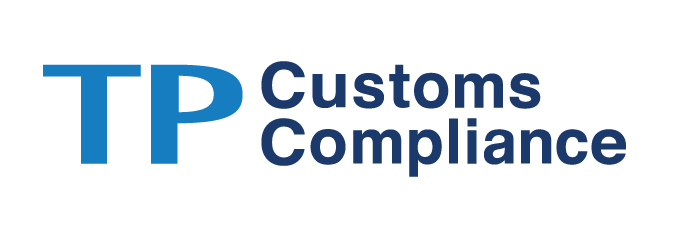By – Lic. Hector Torres.
Ever since the entering of the North America Free Trade Agreement (“NAFTA”), economic development in Mexico has resulted in the business world becoming more sophisticated over the last 25 years.
The adoption of a significant legislative package during the last25 years has positioned the country in legal certainty levels not seen since the economies of the 70s and 80s.
The efforts of the Mexican government to create ideal conditions to foster a favorable business environment also created a level of sophistication for the manner in which commercial transactions or acquisitions are conducted, thereby requiring effective tools that support a potential buyer to take the most appropriate decisions.
An essential tool during an acquisition process is what in the United States of America is known as “Due Diligence”. This basically constitutes an exhaustive audit or review of several areas or topics related to a company, on which results an investor or an interested company will base its decision to pursue the acquisition of such company (“target company”).
In order to better understand the Due Diligence process, hereunder please find some comments which we hope can be useful in your acquisition goals.
What is Due Diligence?
In general terms, Due Diligence is the necessary review that a potential buyer conducts prior to entering into an acquisition deal (or purchase agreement) with the seller, or when already executed, parties have conditioned the closing of the deal (or its effectiveness) to the fulfillment of certain number of conditions, including those of a Due Diligence process, that must be satisfactory to the buyer.
What does Due Diligence involve?
It involves all the efforts necessary in the review or audit performed on the target company, knowing where to look; what to ask; knowing what tools are available; who to ask; where and how to verify the information, and who must ask.
Different types of Due Diligence.
In an acquisition process, there are various types of Due Diligence that a buyer carries out in order to make decisions.
Among the existing types of Due Diligence there are:
Commercial and Marketing Due Diligence.
This type of audit is focused on reviewing information regarding the target company’s operations, its competitors, products and services, advantages and disadvantages, market positioning, sales, marketing aspects and other related topics.
Financial Due Diligence
This is a review of financial aspects, risks, and opportunities that will help a buyer’s decision to move ahead with a particular transaction. Part of this Due Diligence also involves the review of accounting records.
Fiscal and Foreign Trade Due Diligence.
This type of Due Diligence involves the review of all regulatory compliance with local, states and federal provisions, particularly focusing in the correct payment of the numerous taxes such as Income Tax (ISR), Value Added Tax (VAT), Social Security Contributions (IMSS), Retirement Fund (SAR), Housing Fund (INFONAVIT) and any other taxes and contributions that may be relevant due to the nature or commercial activity of the target company.
Legal and Regulatory Due Diligence
This process focuses on the review of legal and regulatory aspects of the target company, including but not limited to contracts, books and documents of various areas, such as corporate, labor, litigation, foreign trade, real estate, intellectual property, taxes (from a legal perspective), environmental, antitrust and any other relevant areas or regulatory aspects that may be applicable to the target company due to its commercial activity or participation in a specific economic sector. For example, if we are dealing with a mining company, it is necessary to review the terms of the governmental concessions granted for the exploitation of the mines; or if dealing with a casino or a gambling business, it would be necessary to review the terms of the permits granted by the Ministry of Interior, among others).
What is required for the participants of a Due Diligence process for the benefit of the buyer?
The advisors or consultants that participate in this type of processes must understand among other aspects, the following: how to extract key information from a person or a determined situation; the objectives of the parties and the underlying transaction; identify key hurdles and risks; identify why certain information might be falsified or omitted; identify ideal sources for disclosure of the information.
What are the main objectives of a Due Diligence?
- First, gather all of the information that allows a potential buyer to assess risks and identify transaction requirements to conclude it in a satisfactory manner.
- Understand, to the extent possible, the manner in which the business of the target company operates.
- Create a platform for a successful transaction.
- Identify those issues or points that could be considered as deal breakers.
- Determine if it is necessary to renegotiate the original terms of the deal based on the Due Diligence Results.
- Identify the need to adjust the purchase price, adjust the payment terms, and include deposits in escrow or holdbacks.
- Change the legal structure of the deal.
- Identify indemnifications events or warranties that should be represented by the seller in order to be able to close the acquisition transaction.
What would be considered as Due Diligence best practices?
- It is important to work as a team, but always naming a captain or leader of the project.
- It is a good practice to appoint the person (s) who will be the points of contact for each party in the transaction.
- The more you know about the target company, the higher the quality of the questions that you can ask.
- Use people with experience in these processes, and if possible with knowledge of the industry or economic sector with which you are dealing with.
- It is advisable to be organized and to have a game plan, a calendar timetable and deadlines for deliverables.
- Use the technological tools available (digital data room, Dropbox, search engine and any others)
- Define limits to the Due Diligence process, in addition to consequences for delays or defaults, penalties, and remedies.
- Understand the motives that a party might have to hide information.
Ask, ask, ask, ask, ask…….



